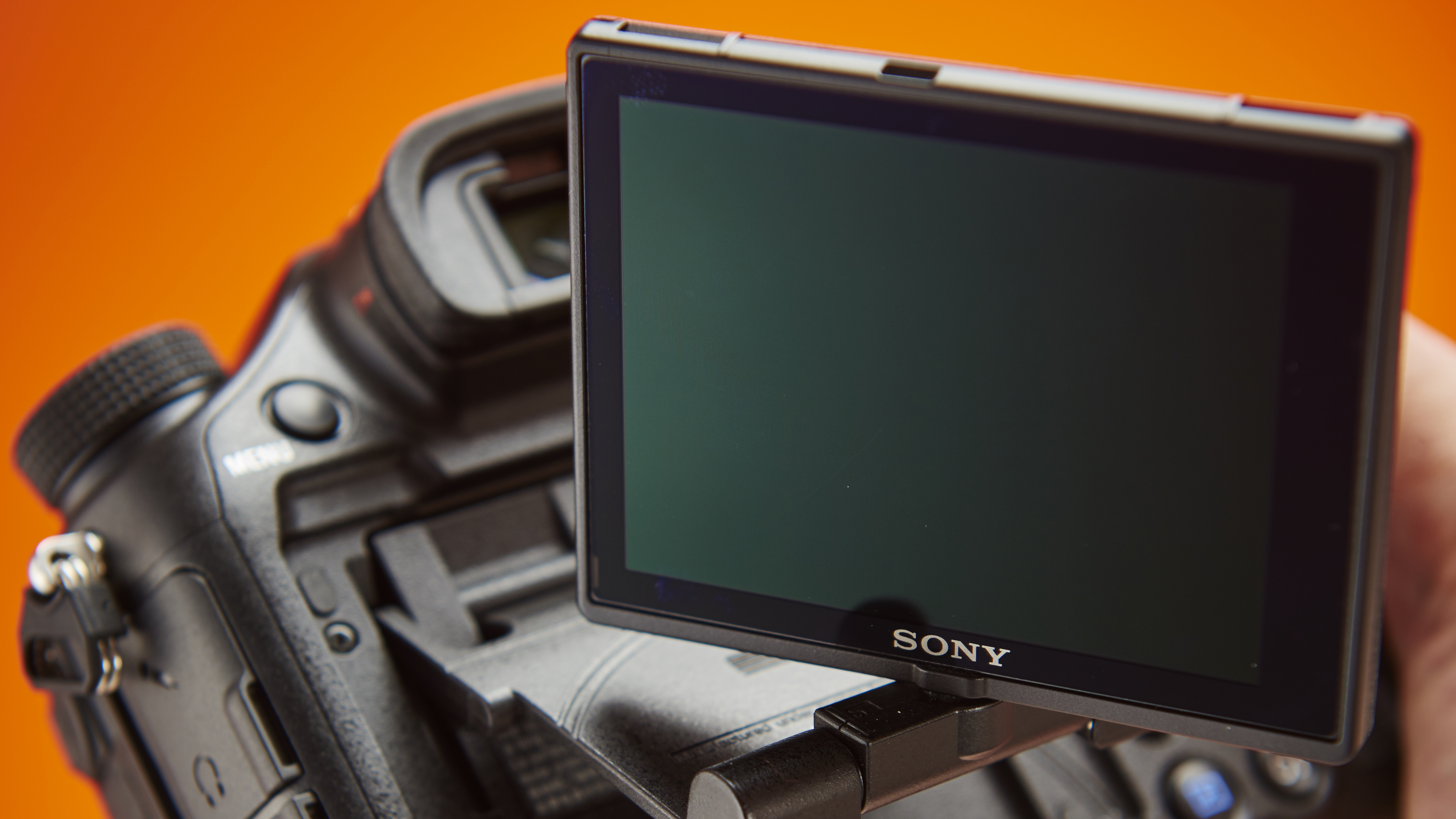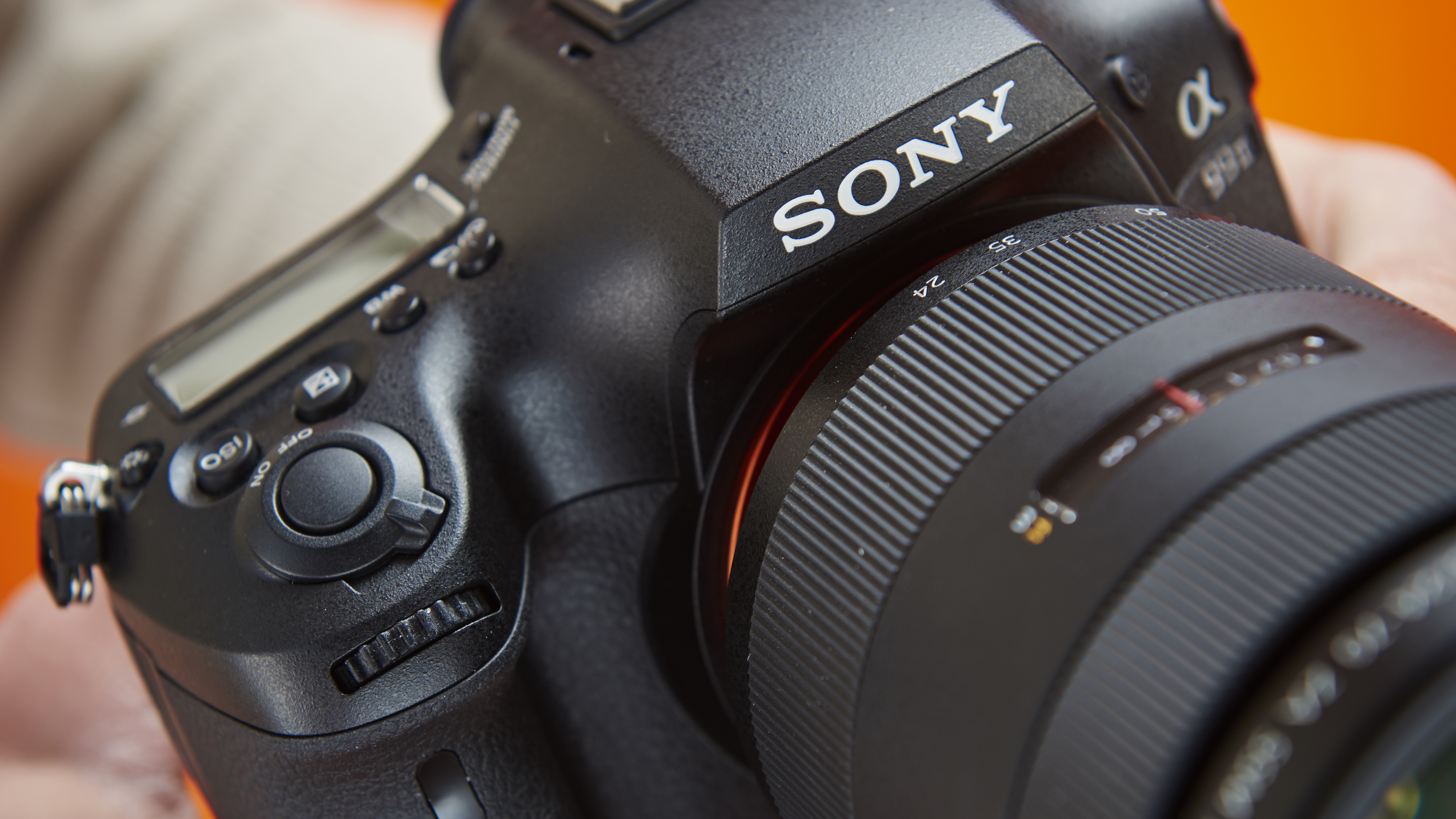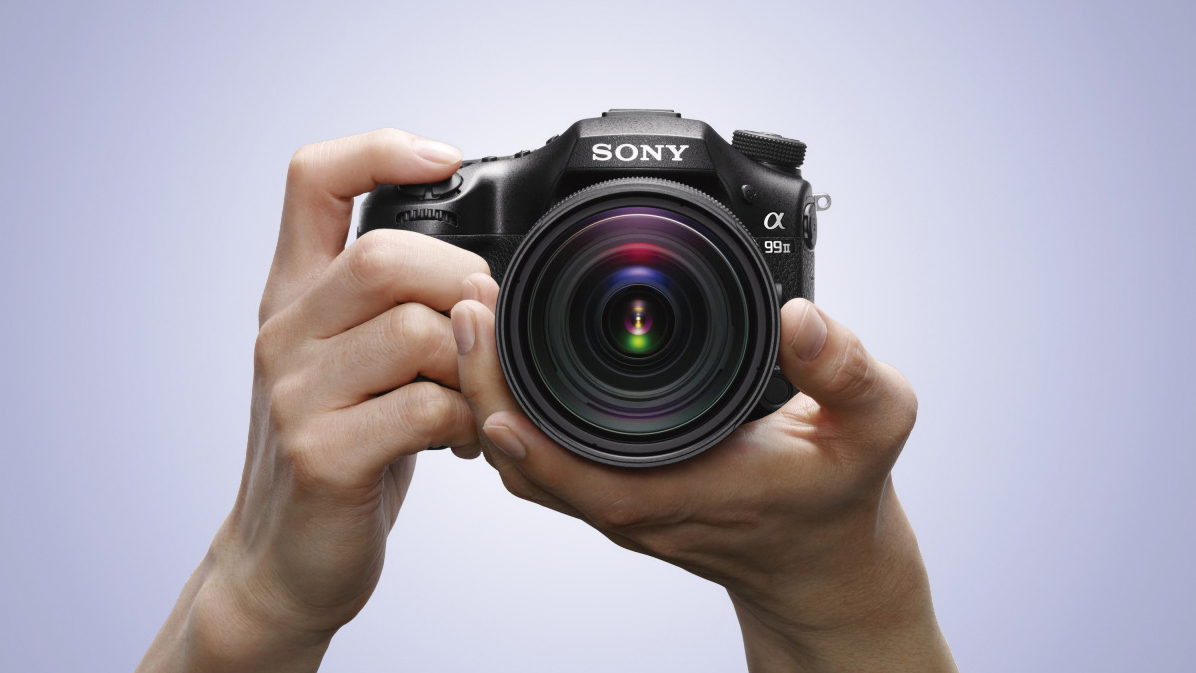Why you can trust TechRadar
Performance
- 12fps burst shooting (with AF and AE)
- 4.5-step, 5-axis image stabilisation system
- 0.5in-type EVF, 2,36 million dots
The Sony A99 II's electronic viewfinder certainly makes an impression the first time you bring the camera up to your eye. With a magnification of 0.78x it fills as much of your view as possible without being difficult to view in its entirety, while the level of detail across the frame is high. It’s also excellent in low light, helping you to see darker scenes clearly, without too much noise obscuring details.
It’s not quite perfect, though. Minor artefacts appear over fine and linear details, while flat areas of no detail – skies, for example – can sometimes be rendered with very fine lines. Also, the relatively shallow eyecup allows you to get close to the finder, although its somewhat pointed design makes it a little less comfortable to use when shooting in portrait orientation, as it tends to dig into the area around your eye.

The 3-inch LCD screen on the rear of the Sony A99 II is slightly smaller than the 3.2-inch versions we’ve become used to on enthusiast- and professional-level models, and it fails to offer the touchscreen functionality we’re starting to see on many of its peers, but it makes up for this somewhat by allowing a particularly broad range of physical adjustments.
Its design allows you to tilt it to fully face forwards, so that it’s positioned either above the top plate or underneath the body itself, and you can also move it to face the side or have it almost parallel to the top plate. In addition, you can fold it to face the camera, which is great for protecting the surface from scratches, and something that’s lacking on other full-frame cameras with adjustable screens, such as Pentax’s K-1 and Nikon’s D750.
With 1.228 million dots it presents images with very good clarity, and zooming around magnified images with the joystick controller shows the camera to respond very well as you scrutinise details. When working outdoors it performs well in balanced conditions, although, as with many other models, it can become trickier to see clearly in brighter light. Fortunately, you can immediately improve things by selecting the Sunny Weather option in the menu system, although this does come at the expense of battery life.

Provided you’re using a very fast card, the Sony A99 II is not only able to maintain a healthy burst depth, but also to send these images out to the card in very good time. Set to capture raw and JPEG images at the camera’s full resolution, the A99 II manages to record around 59 images before slowing down, at both 12fps and 8fps, and this is written to the card in just under 50 seconds. Further burst shooting while this happens is also possible, and, should you be playing back images as they're still being written to the card, the camera will indicate how many are still to be written, which is far more helpful than simply showing its status light, as the majority of other cameras tend to.
While the camera responds very promptly to changes in menu navigation, it sadly carries over one of the issues noticed in the original A99, namely a slight lag on the top-plate LCD when adjusting exposure settings. A quick turn of the command dial is followed by a very brief pause before the exposure value is actually changed here, although if you use the LCD or viewfinder you’ll find it displayed with less delay.
The camera also takes a little longer to fully come to life than some of its rivals, with shooting typically possible but shooting information only displayed in the viewfinder or top plate LCD after a slight delay. For most applications this may not be an issue, but on such a pro-grade camera we'd expect it to match the immediacy of its rivals.
Image quality
- ISO100-25,600 (exp to ISO50 and 102,400 equivalents)
- No anti-aliasing filter
- Picture Profiles for video recording
In addition to supplying other manufacturers with its own sensors, Sony has done a impressive job of furnishing its own models with some very capable ones, at a range of pixel counts.
The A99 II employs a sensor that appears similar to the one inside the A7R II, and it appears to be just as well-rounded a performer. One particularly impressive characteristic is its dynamic range. Images that are grossly underexposed at ISO100, typically by 3-4EV stops, can be brought back to life in post-production, with only a faint trace of noise in shadow areas to deal with. This is great, as it gives you plenty of latitude when faced with scenes with a particularly broad dynamic range, where you may want to underexpose to preserve highlights.

Noise control in general is also commendable. Indoors, images captured at around ISO6400 show a very fine patterning that can be quickly dealt with in post-processing, and if you’re happy to stick to ISO3200 and under you’ll be rewarded with even more natural-looking results. No doubt the lack of an anti-aliasing filter is partly what helps images to retain their details as well as they do here.

The A99 II’s metering system typically strikes the right balance with regard to its exposures, although there does appear to be a very slight tendency towards underexposure at times. Often, its behaviour here makes sense, as the camera is attempting to preserve highlights, although at other times the histogram shows it could have exposed a little brighter without sacrificing any details.
Fortunately, Sony has provided five separate metering modes to help you better tailor your camera to the specific scene at hand, including 'Entire screen average' and Highlight options that didn't feature on the A99, while the exposure compensation control falls easily to the finger too. It’s also a good idea to enable the Dynamic Range Optmizer for everyday shooting, as this can instantly lift shadowy areas for more pleasing results.

For a full-frame camera that offers a great deal of control over video recording, it comes as little surprise to find the A99 II to be as capable as it is. Footage is richly detailed, and motion is depicted without any obvious artefacts, while noise isn't entirely absent but is very well controlled. Audio is also recorded faithfully, and the Silent Multi Control on the front of the camera does exactly as promised, with its operation not picked up by the camera’s microphones during recording (assuming it has been de-clicked first).

The only strike against the Sony A99 II is that, like so many other cameras that lack an optical low-pass filter, footage of certain subjects is prone to aliasing artefacts. While you’re unlikely to see these in most everyday scenes, as soon as you have some distant buildings or something similar in the scene this can be apparent. If you don’t include such details in your compositions, however, you’ll be rewarded with strong results.
One omission, which isn’t critical but is still disappointing, is in-camera raw processing. This is currently being offered widely across models of all levels, and it makes light work of quickly polishing your images for immediate use, but for some reason it’s not something Sony has chosen to embrace here.
Current page: Performance and image quality
Prev Page Building, handing and AF Next Page Verdict and competition